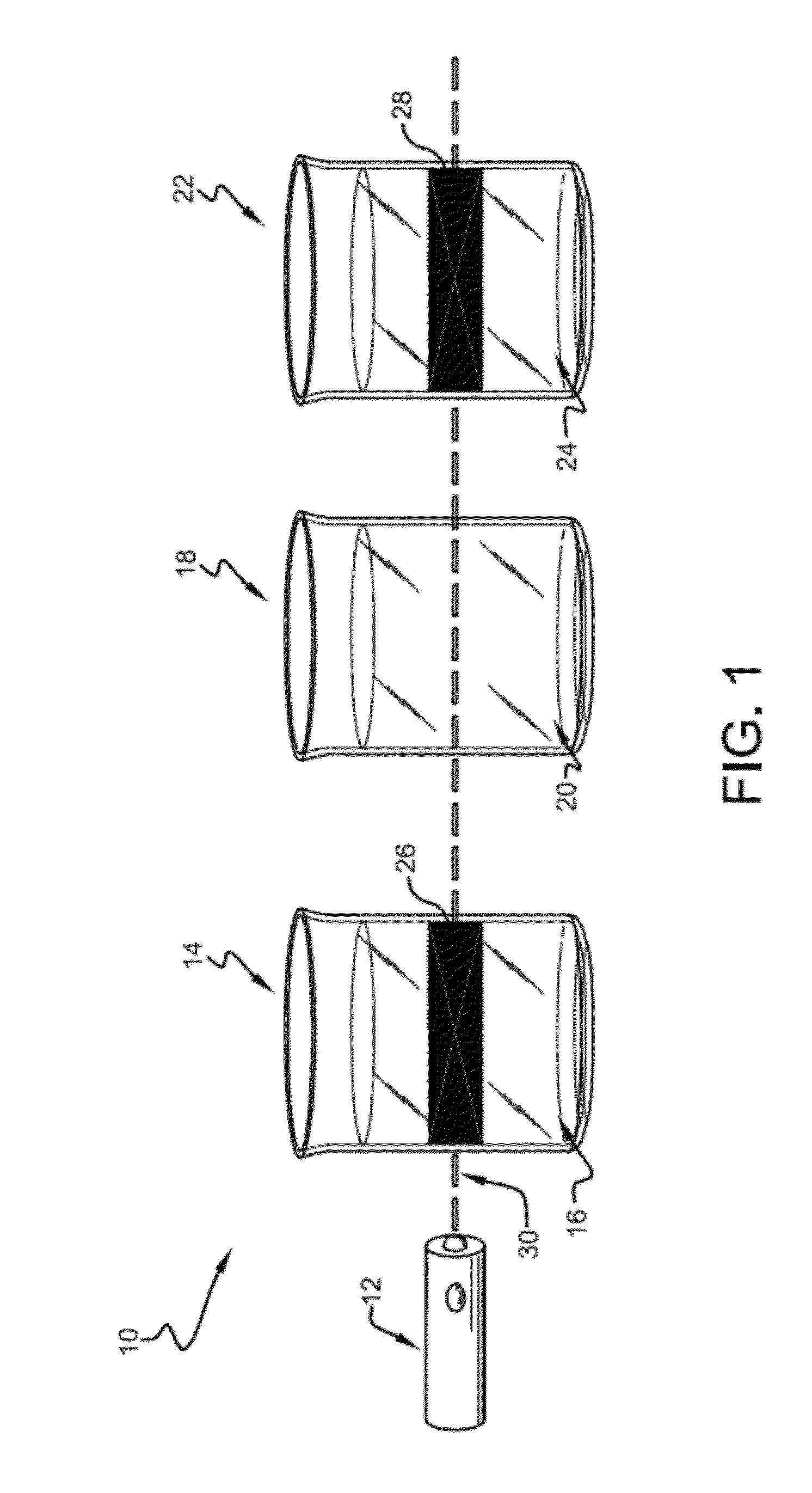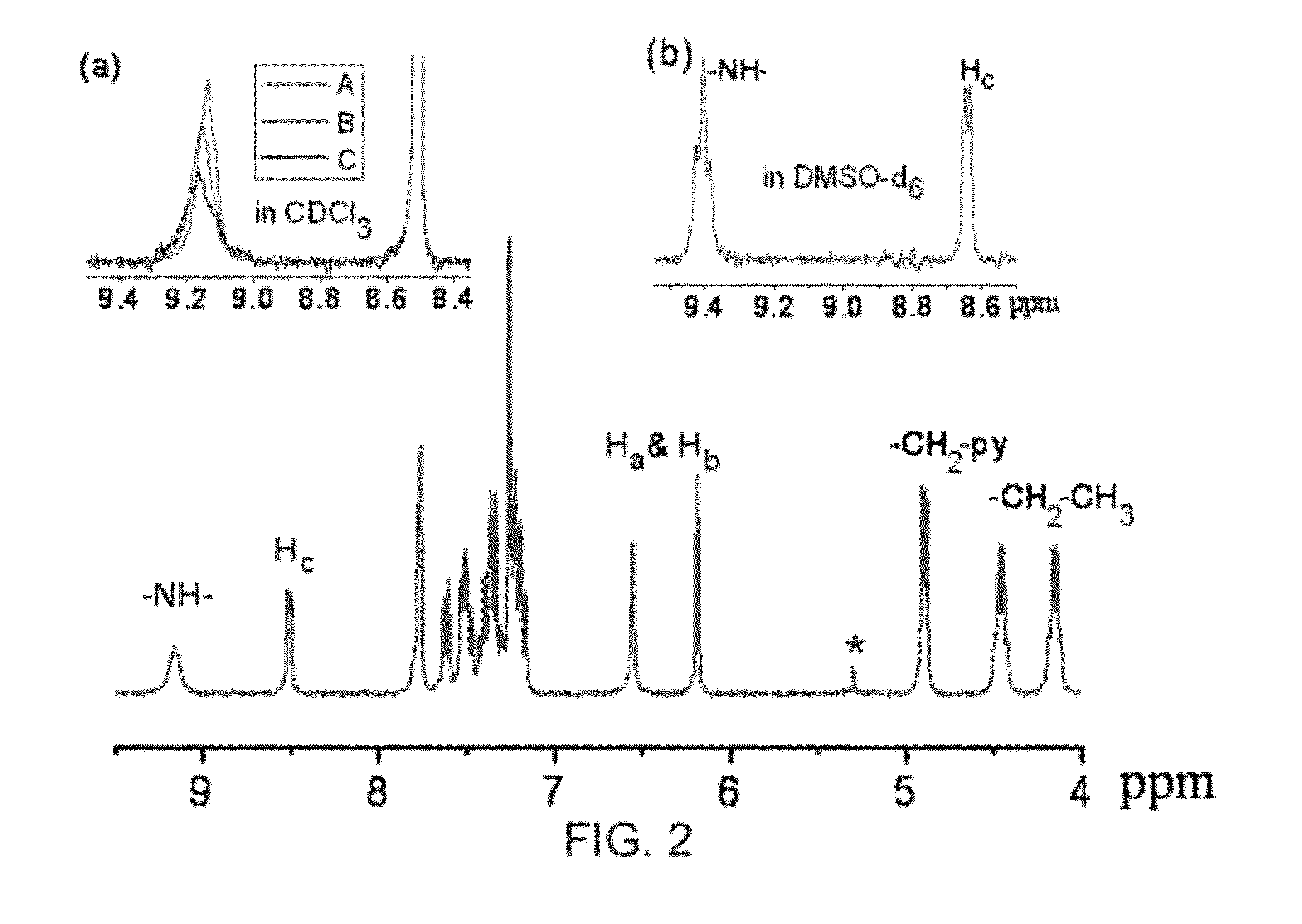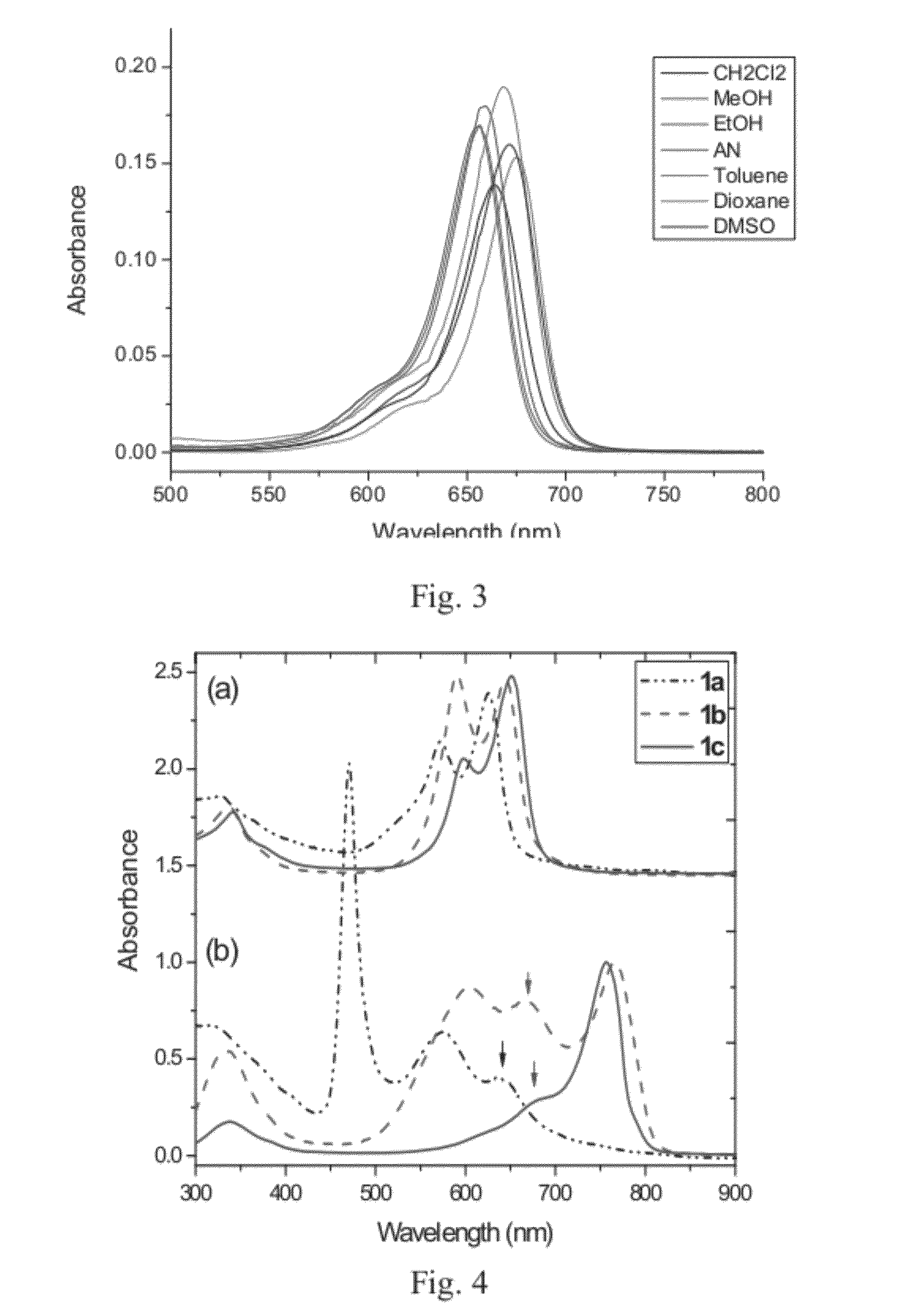Using squaraine dyes as near infrared fluorescent sensors for protein detection
a technology of squaraine dye and fluorescent sensor, which is applied in the field of compounds for the detection of proteins, can solve the problems of narrow linear response range and limited sensitivity
- Summary
- Abstract
- Description
- Claims
- Application Information
AI Technical Summary
Problems solved by technology
Method used
Image
Examples
examples
Experimental Results for Compositions of SQ Dyes and Anionic Surfactants
[0067]In this experiment, reference is made to squaraine dyes 1a, 1b and 1c. These squaraines are defined below:
wherein, for squaraine 1a, R2 is —CH3O; for squaraine 1b, R2 is:
and for squaraine 1c, R2 is:
The counterion R1 is CF3SO3−.
Reagents
[0068]All chemicals and reagents were used directly as obtained commercially unless otherwise noted. Water used was ultra filter deionized and purchased from Fisher Scientific. BSA (98%), borax-boric acid, sodium dodecyl sulfate (SDS, electrophoresis grade) were purchased from Acros Chemical, lysozyme, trypsin, formaldehyde dehydrogenase were purchased from SIGMA; and Thrombin was purchased from GE Healthcare.
Spectroscopic Measurements
[0069]NMR spectra were collected on a Varian 300 Gemini spectrometer. Mass spectrometric data were obtained on a HP1100LC / MSD mass spectrometry. HRMS data were performed on a TOF MS system. UV-Vis spectra were acquired on a Hewlett-Packard 8453 ...
PUM
 Login to View More
Login to View More Abstract
Description
Claims
Application Information
 Login to View More
Login to View More - R&D
- Intellectual Property
- Life Sciences
- Materials
- Tech Scout
- Unparalleled Data Quality
- Higher Quality Content
- 60% Fewer Hallucinations
Browse by: Latest US Patents, China's latest patents, Technical Efficacy Thesaurus, Application Domain, Technology Topic, Popular Technical Reports.
© 2025 PatSnap. All rights reserved.Legal|Privacy policy|Modern Slavery Act Transparency Statement|Sitemap|About US| Contact US: help@patsnap.com



